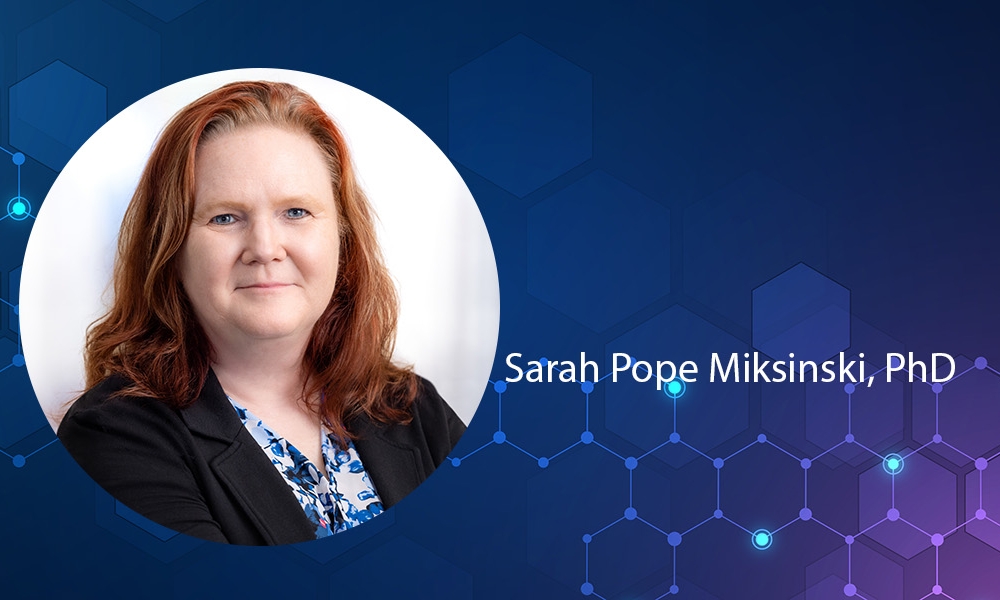Sanat Chattopadhyay

As Head of Merck’s Global Manufacturing Operations and one of the most senior operations leaders in Merck, Sanat is responsible for Merck’s worldwide manufacturing operations and product supply, supporting global sales revenue of over $55 billion.
Sanat’s organization oversees a complex and large network of manufacturing, commercialization, and distribution operations across four different platforms of pharmaceuticals, vaccines, biologics, and animal health with over 20,000 employees in over 22 countries. Merck supplies over 150 billion doses of life-enhancing medicines and vaccines (human and animal health) to over 140 countries.
Sanat has served on Merck’s Executive Committee since 2016. He spearheaded the transformation of manufacturing and supply chain to grow and globalize its vaccine business and played a key part in successfully leading the company’s launch of the immuno-oncology product KEYTRUDA in record time by mobilizing a cross-divisional effort to overcome commercialization and supply constraints. Under Sanat’s leadership, Merck has been executing significant expansion of its biologics and vaccines manufacturing capacity to reach more patients around the globe.
Before joining Merck in 2009, Sanat served as Senior Vice President, Technical Operations & Product Supply, for Wyeth Pharmaceuticals, with responsibility for product supply, process development, and operational excellence. Previously, he worked at Aventis and its predecessor companies as Senior Vice President, Industrial Operations, and in many other positions of increasing responsibilities for global supply chain, technology, and manufacturing sites across North America, Europe, and Asia Pacific.
Outside of Merck, Sanat is the Chair of the Board of Directors of Hilleman Laboratories, an equal joint-venture partnership formed between Merck and Wellcome Trust, a global charitable foundation dedicated to human and animal health. Sanat holds a master’s degree in industrial engineering and management science from NITIE, Mumbai, and a bachelor’s degree in chemical engineering from Jadavpur University, Kolkata, India.
Tell us about your journey and the challenges you faced as you got to your current position.
I started my journey in the biopharmaceutical industry after I completed my graduate degree in chemical engineering. I had studied both engineering and management and was not sure where to go when I was contacted by a company called Hoechst AG, a German chemicals and life sciences company where three Nobel Laureates had worked. I thought that a company that had produced three Nobel Laureates could convert me into something great. Eventually I became the head of supply chain and logistics.
At 29 years old, I got the opportunity to become a CEO of a small company. I was afraid to attend the first company board meeting because I thought they might fire me. I received assurance that I would not be fired at the first meeting but was told that would not necessarily hold true for the second. The company was in a lot of trouble, had a lot of debt, and it was a huge battle each day, but I learned that the art and science of running a small business was very different from running a large one.
It was about agility, constant innovation, and resiliency. That truly taught me how to do business during difficult times. Every time I talk to students both inside and outside of Merck who ask me how I built my career, I tell them that that was the best learning I ever had in my career and that sometimes in life it’s OK to try to reach for the moon as even if you miss, you will land among the stars.
What do you see for the future of manufacturing?
As a company, Merck has always been driven by innovation. The current healthcare landscape is influenced by a lot of micro and macro trends, such as shorter innovation cycles, price reform, access expansion, and patient engagement. And the whole system is going to evolve such that there will be a consolidation of providers and payers and nontraditional players.
Cybersecurity threats, the global pandemic, and the Russia-Ukraine conflict have shown us that supply chain disruptions are bound to happen and that we need to increase efficiency, flexibility, and resiliency. Finally, there’ll be talent scarcity across our industry derived from high levels of competition in specialized skills, assets, and different ways of working.
At Merck, the first thing we focus on is how to generate a best-in-class, compliant supply. Because if you’re not best-in-class in compliance, reliability, and supply, then it’s almost impossible to create value for the patients. We need to look at emerging technologies in the context of where the new platforms are taking us. Emerging technologies and platforms are not only about compliant supply, but also products, processes, and supply chains. The whole manufacturing footprint will look different.
The question is how to accomplish this. Technology can be the answer. The rise of new innovations, analytics, and big data can be converted into usable knowledge—knowledge we can harness to transform our models and build that ambitious patient-centric future. At Merck, we are convinced that the future is going to be dominated by the need to garner benefits from investments in emerging science and emerging technology.
Where will technology lead us?
The pandemic has already influenced the future of manufacturing. It emphasized the need for agility and speed in every aspect of our work as well as for a very strong partnership with regulators. It reinforced the importance of access and the need to create products that can reach the most vulnerable patients. We can create a transformative, patient-centric future where all patients, no matter who they are, where they live, or what time of day it is, can receive lifesaving medicines safely, swiftly, reliably, and affordably. To this end, there need to be improvements in the selection of technologies, establishing supply chains closer to the patient, and flexible manufacturing facilities.
Flexible facilities can be constructed at a fraction of today’s costs. We will see technologies borne out of rapid clinical development that can allow commercialization from scale-out through intensified processes that can result in better capacity utilization, and they can be supported by digital platforms that enable real-time feedback and active control strategies.
We can also envision making our manufacturing transportable in a way that it can be readily deployed closer to the patient base. Manufacturing facility design will all converge to achieve true plug-and-play paradigms that allow rapid reconfiguration of production spaces and seamless implementation of new innovations.
We will also see the impact of machine learning. For example, in our filling lines, machine learning will constantly teach our cameras so that we falsely reject fewer and fewer drug product units. The use of advanced data analytics will fundamentally increase both in-line and at-line data monitoring and control, and when that is coupled with advanced, multivariate analytics, it will enable in-process quality optimization.
These are just some examples of how the future can get transformed. Whether Merck and the biopharmaceutical industry will be able to achieve this vision in the next few decades is still unknown, but we do know that the advances being made today will undoubtedly move us further along this journey. Manufacturers are going to play a very important role because the potential of science will remain as only potential without manufacturers helping transform the world of biomanufacturing.
How will this benefit patients?
Access and cost will be the key areas where we can create a huge amount of value for the patient. Patients should benefit from having more accessibility to more affordable drugs. It is possible for us to make the presentation of the product very different in the future and the whole concept of access is going to look different for patients if we can revolutionize the patient experience.
Imagine technologies that do not require skilled administration, where we will have significantly advanced intradermal, subcutaneous, mucosal, and oral routes of administration; devices such as patches and on-body injectors that will revolutionize the patient experience; and physician administration that will be transformed into at-home administration without loss of efficacy.
From an affordability point of view, we can use technological advances to reduce the unit cost of the product. If it is small molecules, which involve synthetic chemistry, we can apply biocatalysts and many other steps to be able to reduce the cost. We can create global transportation solutions to reduce the transportation cost.
What role does ISPE play in all of this?
I think trade associations like ISPE play a very important role in promoting best practices: they inform public policies and regulations and develop industry standards.
ISPE connects industry leaders and brings together pharmaceutical knowledge that helps manufacturing and supply chain innovation. It helps us think about how to innovate in operational excellence and how to bring new regulatory insights to enhance efforts in the industry. ISPE is a great example of how companies can come together, not as competitors, but as collaborators to help patients.
Share Your News with 21,000 Members!
Share information about Affiliate and Chapter events, trainings, Women in Pharma® meetings, Emerging Leaders activities, and Communities of Practice and Special Interest Group work—and we’ll share it with all of ISPE in Pharmaceutical Engineering’s People+Events (P+E) section. Articles can be 400 to 1,000 words. Photos are welcome: at least 300 dpit or >1MB. Please submit to msanford@ispe.org



